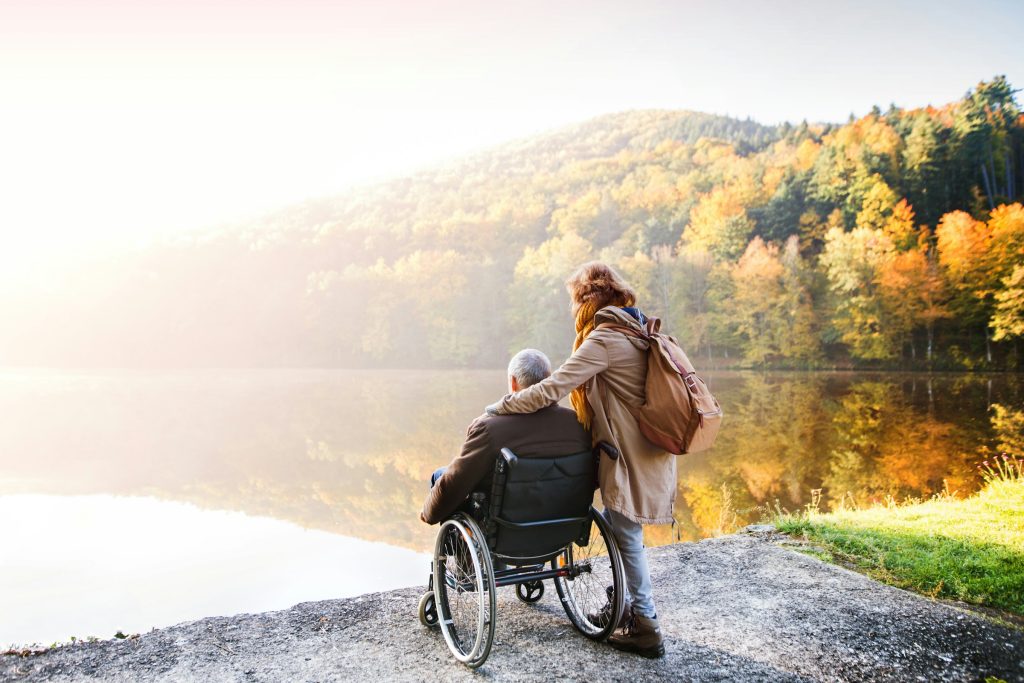In the vibrant tapestry of human experiences, travel stands out as a thread that weaves together cultures, broadens horizons, and creates lasting memories. Yet, for many Australians living with disabilities or mobility challenges, the prospect of travel can seem daunting. The good news? With proper planning and knowledge, accessible travel is not just possible—it’s an enriching reality waiting to be embraced.

The Rising Tide of Accessible Tourism in Australia
Before diving into the nitty-gritty of planning, it’s worth noting the growing importance of accessible tourism in Australia. According to a 2018 study by the University of Technology Sydney, the potential value of accessible tourism to the Australian economy is estimated at $8 billion annually. This staggering figure underscores the economic significance and the increasing recognition of the rights and desires of travellers with disabilities.
Understanding Accessible Travel: More Than Just Ramps
When we talk about accessible travel, it’s easy to think solely about wheelchair ramps or elevators. While these are crucial, true accessibility encompasses a much broader spectrum. It’s about creating an environment where everyone, regardless of their physical or cognitive abilities, can enjoy travel experiences with dignity and independence.
Essential Steps for Planning Accessible Travel
Research, Research, Research
The cornerstone of any successful trip is thorough research, and this holds even truer for accessible travel. Start by:
- Investigating destination accessibility: Look for information on accessible attractions, transportation, and accommodations.
- Reading reviews from other travellers with similar needs.
- Contacting local disability organizations for insider tips and resources.
Choose Accommodations Wisely
Your accommodation can make or break your travel experience. When booking:
- Look beyond the “wheelchair accessible” label. Ask specific questions about room layouts, bathroom facilities, and available assistive devices.
- Consider proximity to attractions and accessible public transport.
- Check if the staff has received disability awareness training.
Plan Your Transportation
Getting from point A to B can be one of the biggest challenges in accessible travel. To ease the journey:
- Research accessible public transportation options at your destination.
- If renting a vehicle, ensure it meets your specific needs and book well in advance.
- For air travel, familiarise yourself with airline policies and notify them of your requirements at least 48 hours before departure.
Pack Smart
Thoughtful packing can significantly enhance your travel experience:
- Bring spare parts for mobility aids.
- Pack any necessary medications in your carry-on luggage.
- Consider portable accessibility tools like ramps or grab bars.
Expect the Unexpected
Even with meticulous planning, travel can throw curveballs. Prepare for contingencies by:
- Having a backup plan for accommodations and activities.
- Carrying important medical information and emergency contacts.
- Purchasing comprehensive travel insurance that covers pre-existing conditions.
The Australian Landscape of Accessible Travel
Australia has made significant strides in making travel more accessible. The Disability Discrimination Act 1992 provides a legal framework for equal rights and opportunities, including in the realm of travel and tourism.
Accessible Attractions Down Under
Many of Australia’s iconic attractions have embraced accessibility:
- The Sydney Opera House offers wheelchair accessibility and assisted listening systems.
- Uluru-Kata Tjuta National Park has wheelchair-accessible viewing areas and trails.
- The Great Barrier Reef features tour operators offering accessible snorkelling and glass-bottom boat tours.
Public Transportation: A Mixed Bag
While progress has been made, accessible public transportation in Australia varies by location. According to the Australian Human Rights Commission, as of 2022:
- 100% of Sydney’s public ferry fleet is wheelchair accessible.
- In Melbourne, approximately 80% of tram stops are now level-access.
- Brisbane’s bus fleet is 100% accessible, with low floors and wheelchair ramps.
However, challenges remain, particularly in regional and rural areas where accessible transport options can be limited.
Embracing Technology for Accessible Travel
The digital age has ushered in a new era of tools and resources for accessible travel:
- Apps like Wheelmap and AccessNow provide crowd-sourced information on accessible locations worldwide.
- Virtual reality tours allow travellers to “preview” destinations and plan accordingly.
- Online booking platforms increasingly offer detailed accessibility filters.
The Human Touch: The Importance of Community
While technology and infrastructure are crucial, the human element remains at the heart of accessible travel. Connecting with local disability communities or joining travel groups for people with similar needs can provide invaluable support and insider knowledge.
Mark, a wheelchair user from Brisbane, shares, “Some of my best travel experiences have come from tips shared by fellow travellers in online forums. It’s like having a global network of friends who truly understand your needs.”
Looking Ahead: The Future of Accessible Travel
As awareness grows and technology advances, the future of accessible travel looks promising. Initiatives like the development of universal design principles in tourism infrastructure and the increasing integration of accessibility features in mainstream travel services paint a picture of a more inclusive travel landscape.
However, challenges remain. Advocacy groups continue to push for more comprehensive accessibility standards and better enforcement of existing regulations. The journey towards truly universally accessible travel is ongoing, but with each step forward, new horizons open up for travellers of all abilities.
In conclusion, while planning accessible travel requires extra effort, the rewards are immeasurable. By taking these essential steps and embracing the spirit of adventure, travellers of all abilities can unlock the transformative power of travel. Remember, every journey begins with a single step—or roll, or stride. The world is waiting, and it’s more accessible than ever before.

